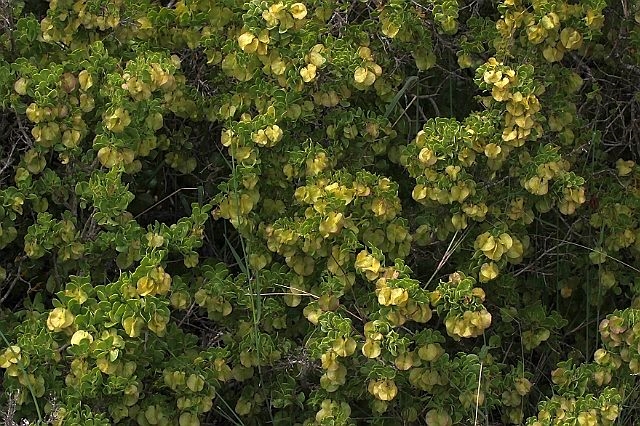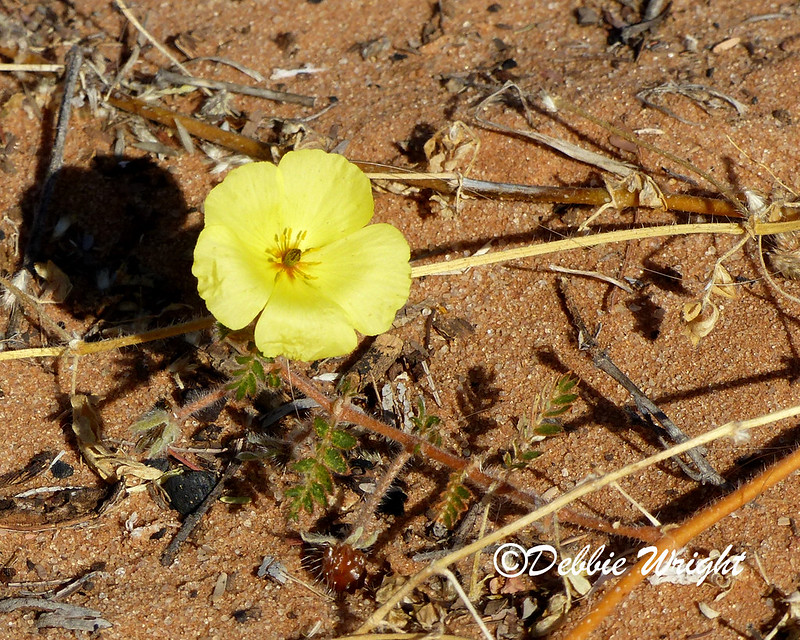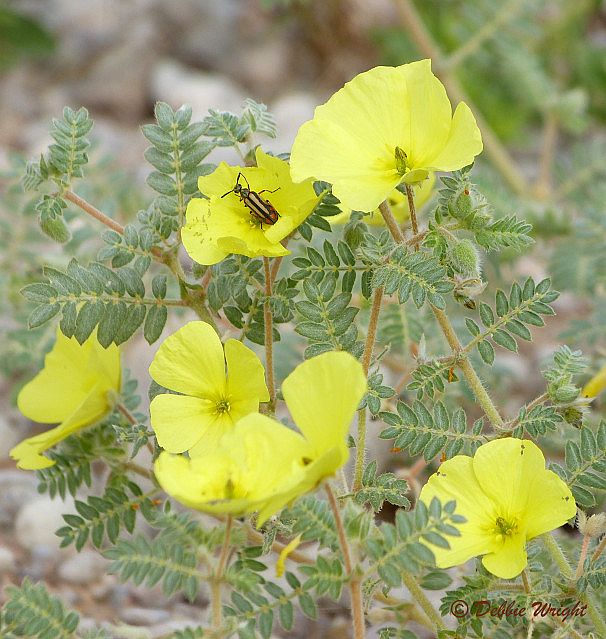Tortoise Bush, Slymbos Zygophyllum morgsana, formerly
Roepera morgansa (Leeubos, Leeubossie, Skilpadbos)
Order: Zygophyllales. Family: Zygophyllaceae

© Tina
Zygophyllum morgsana in fruit in the West Coast National Park
Species of
Zygophyllum are perennials, rarely herbaceous annuals. They are ± round, many-stemmed dwarf shrubs, rarely shrubs, ± 1 m x ± 1.5 m. Sometimes the stems will scramble into and over nearby plants or the branches are densely tangled. The leaves are fleshy, bifoliolate (having two leaflets) or simple and in opposite pairs. Petioles are present, often quite short, or absent. The leaflets are variable in size and shape. Membranous, herbaceous or spiny stipules are also a prominent feature of the genus. The plants are known as xerophytic leaf succulents as they occur in dry conditions and have fleshy leaves. The leaves are usually drought deciduous, dropping off under unfavourable conditions.
The flowers are borne singly in the axils of the leaves. The calyx and corolla are usually 5-merous. The sepals are somewhat fleshy, slightly connate at the base. Petals are shades of yellow, white or light orange. In most species the petals have red markings towards the base or are streaked with red veins. The petals are free, sessile and clawed, broadly obovate, elliptic or spathulate (spoon-shaped). An 8- or 10-angled fleshy disc is present, with the corresponding number of stamens inserted at the base. Stamens are always twice as many as the petals; their filaments are free but have appendages at their bases.
Zygophyllum is further characterized by a simple style with a minute stigma, longer or shorter than the ovary, which is sessile on the disc. The stigma is minute.
The fruit is a capsule or a schizocarp (fruit splits into two or more parts). Different capsule types occur. When dry, the capsules are often ridged or ± smooth as in Z. flexuosum, or winged as in
Z. morgsana. A few to several seeds occur in each locule (chamber) of the ovary.
Description
Shrub or shrublet to 1 .5 m with petiolate leaves divided into two asymmetrical, oval leaflets; stalk 12-25 mm long.
It bears pale yellow flowers with reddish markings, with only four petals, marked with red. Flowers in pairs at the end of branches.
Large fruits pendulous with 4 prominent membranous wings, each 15 mm wide.
Distribution
From southern Namibia to the Eastern Cape.
Habitat
Korroid vegetation, fynbos, strandveld. Sandy and stony slopes and flats, mostly on the coast.
Links:
Braam Van Wyk: A Photographic Guide to Wild Flowers of South Africa

 © GavinW
© GavinW © Tina
© Tina © Lisbeth
© Lisbeth